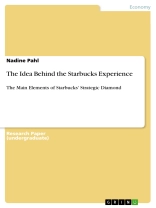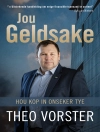Research Paper (undergraduate) from the year 2008 in the subject Business economics – Operations Research, grade: 1, 0, University of Applied Sciences Berlin, course: International Entrepreneurship, language: English, abstract: 1971, when the ‘Starbucks experience’ begun, Starbucks was just a small coffee shop in Seattle, USA. Today, Starbucks, named after the first mate in Herman Melville’s Moby Dick, is the world’s leading retailer, roaster and brand of specialty coffee with millions of customer visits per week at stores in North America, Europe, Middle East, Latin America and the Pacific Rim.
Thus, within not more than three decades, Starbucks’ offering of distinctive blend of quality coffee, neighbourly camaraderie and a unique coffeehouse culture combined with an aggressive growth strategy helped it to become the most famous specialty coffee shop chain in the world and a global company: In 2007, it run more than 15, 000 stores worldwide by employing more than 172, 000 people. But in the same year 2007 – despite revenues of USD 9.4 billion – Starbucks had to report a first-ever decline in same-store sales.
As early as the mid-1990s, analysts had been predicting that Starbucks could not sustain such strong growth, especially in same-store sales. For more than 10 years, Starbucks had consistently beaten these expectations. By 2007, however, Starbucks unprecedented size, combined with the uncertainty of the economy, had placed the company in a new competitive game.
As a result, in early 2008, Starbucks announced a series of initiatives to cope with the new challenges and to prepare for a successful future – all of them based on renewing the focus on customer experience and slowing down expansion. But what constitutes the Starbucks strategy that has been that successful in the past? What were the main drives of the considerably growth of the Starbucks business? And is the Starbucks strategy flexible enough to adapt to the current challenging market conditions?
After the introduction of the Starbucks business in terms of vision, mission and history, this assignment focuses on answering these questions by analysing Starbucks’ strategy and its key drivers of success in chapter 2. This analysis is done with the model of the ‘strategic diamond’ that is introduced in the beginning of chapter 2 as working basis. The assignment ends a comprehensive analysis of the challenges Starbucks is facing today and how it prepares to successful handle them.
Nadine Pahl
The Idea Behind the Starbucks Experience [EPUB ebook]
The Main Elements of Starbucks’ Strategic Diamond
The Idea Behind the Starbucks Experience [EPUB ebook]
The Main Elements of Starbucks’ Strategic Diamond
Beli ebook ini dan dapatkan 1 lagi GRATIS!
Bahasa Inggris ● Format EPUB ● ISBN 9783640297634 ● Ukuran file 4.3 MB ● Penerbit GRIN Verlag ● Kota München ● Negara DE ● Diterbitkan 2009 ● Edisi 1 ● Diunduh 24 bulan ● Mata uang EUR ● ID 3845871 ● Perlindungan salinan tanpa












